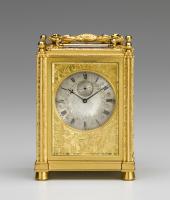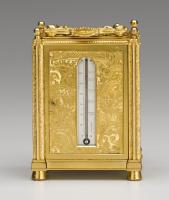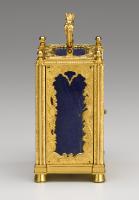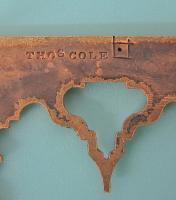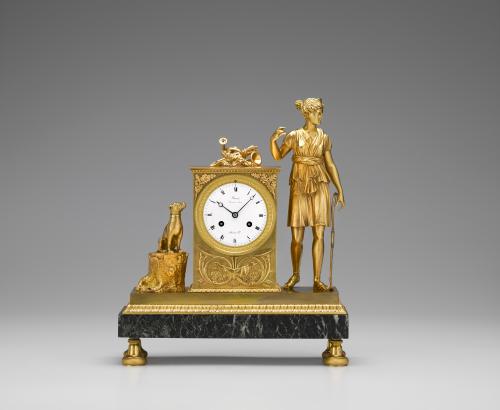
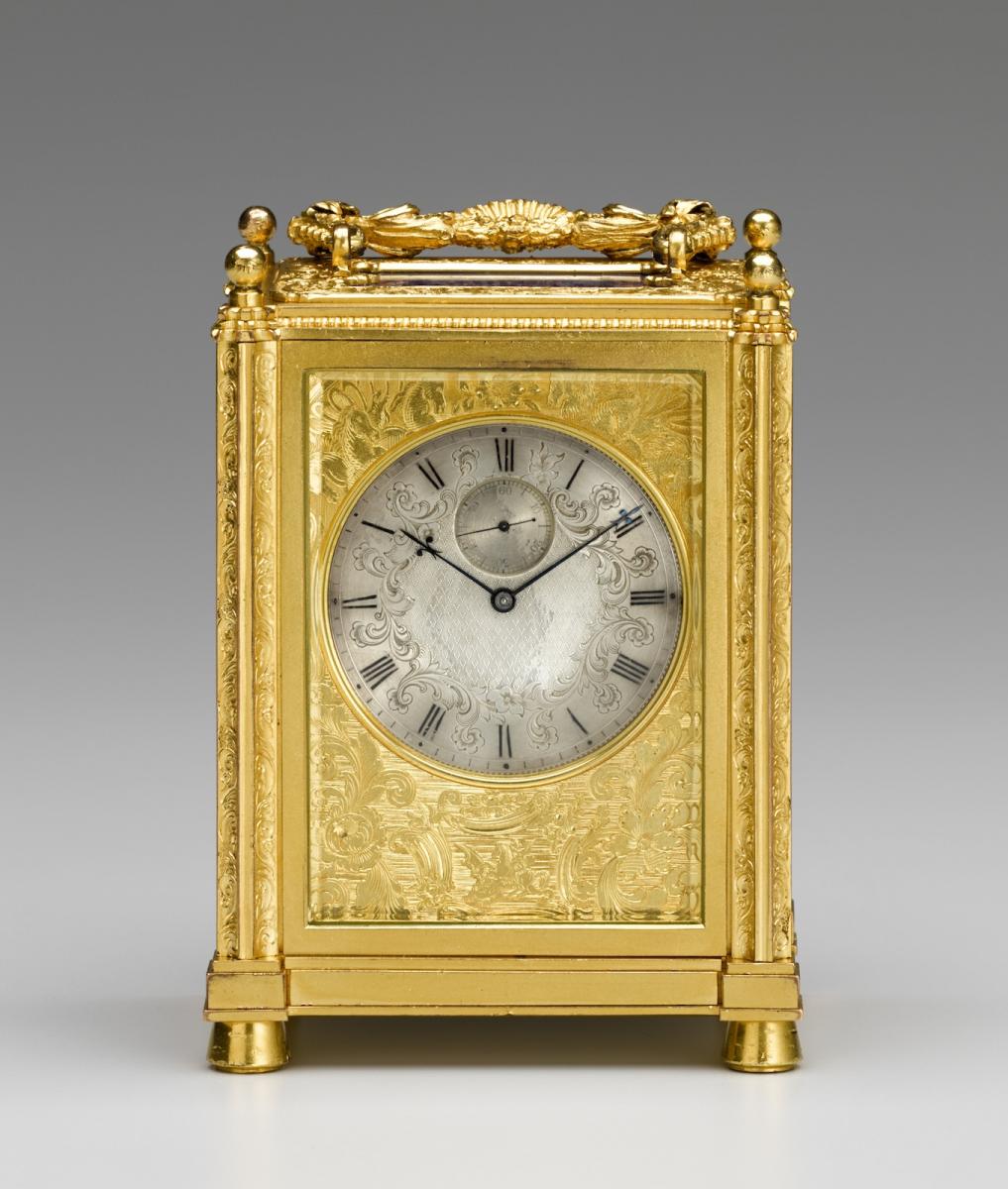
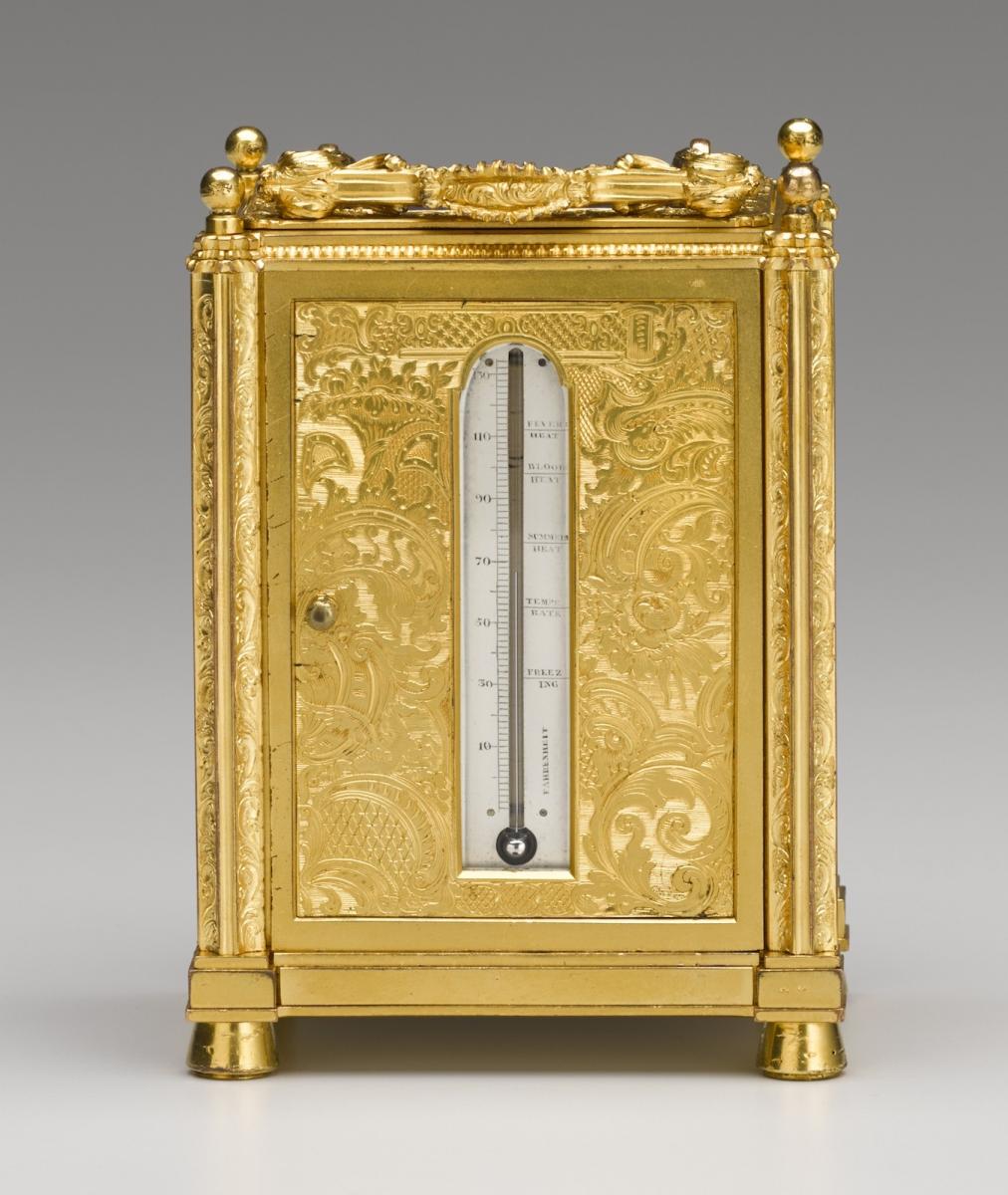
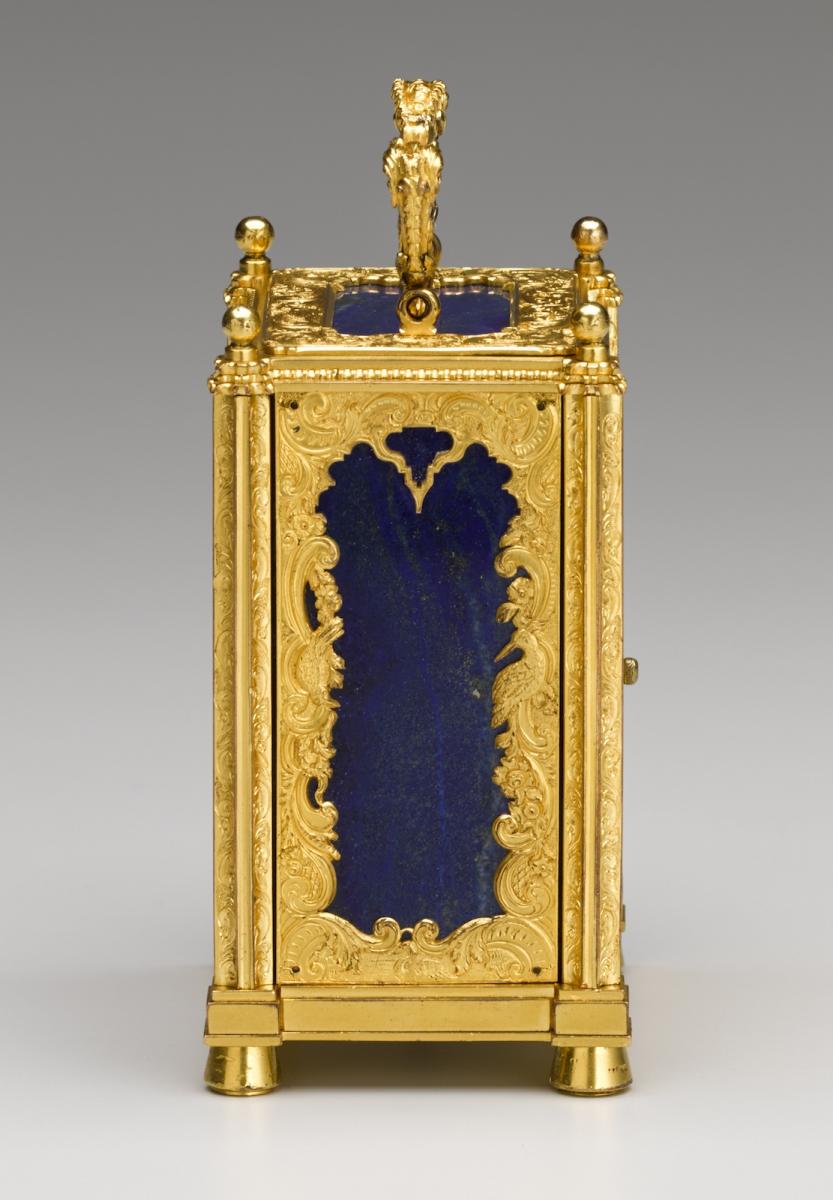
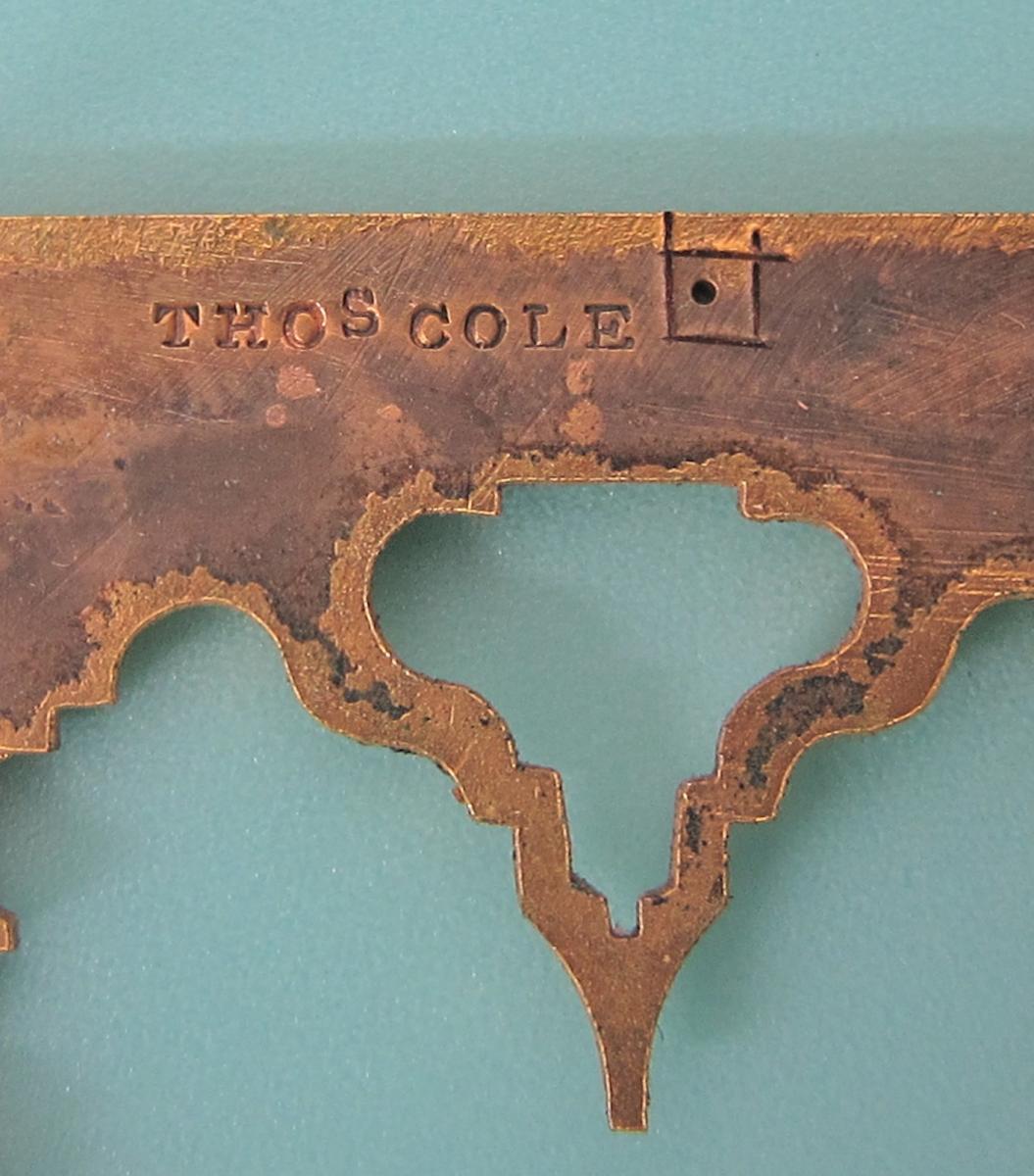
This object is eligible for a Certificate of BADA Provenance
The BADA Standard
- Since 1918, BADA has been the leading association for the antiques and fine art trade
- Members are elected for their knowledge, integrity and quality of stock
- Our clients are protected by BADA’s code of conduct
- Our dealers’ membership is reviewed and renewed annually
- Bada.org is a non-profit site: clients deal directly with members and they pay no hidden fees
A very fine and rare chronometer carriage timepiece made by Thomas Cole, London. The gilt brass case beautifully engraved with horses, birds and foliage with inset panels of lapis lazuli to the sides and top. The engraved back door inset with a thermometer and silvered scale opening to reveal the winding and hand setting engraved with the retailers name Mortimer & Hunt. Original engraved and gilt brass winding key.
This exquisite little clock is very rare for having a chronometer escapement, one of the most difficult and expensive escapements to make and the quality of the case with the superb engraving. Thomas Cole clocks are known for the quality of the engraving and are sought after by collectors. As mentioned in John Hawkins book, Thomas Cole & Victorian Clockmaking published in 1975, very few carriage clocks by Thomas Cole have been recorded.
Mortimer & Hunt (1839-1843) were successors to ‘Storr & Mortimer, Goldsmiths and Jewellers to Her Majesty’ (1822-1839). The famous silversmith Paul Storr founded the company in 1792 under the name Storr & Co, and took John Mortimer as a partner in 1822 and John Samuel Hunt, Storr’s nephew (who had been working for Storr as a silversmith since 1810), as a third partner in 1826.
When Paul Storr retired from the firm Storr & Mortimer on December 31, 1838, John Samuel Hunt’s son John Hunt became a third partner and they did business as Mortimer & Hunt. When John Mortimer retired in 1843, the Hunts took Robert Roskell as a partner and C.F. Hancock, continuing the business as ‘Hunt & Roskell’.
Lapis Lazuli with its deep azure blue colour and often flecked with golden pyrite inclusions, was treasured by the ancient Babylonians and Egyptians and often worn by Royalty.
Persian legend says that the heavens owed their blue colour to a massive slab of Lapis upon which the earth rested.
The BADA Standard
- Since 1918, BADA has been the leading association for the antiques and fine art trade
- Members are elected for their knowledge, integrity and quality of stock
- Our clients are protected by BADA’s code of conduct
- Our dealers’ membership is reviewed and renewed annually
- Bada.org is a non-profit site: clients deal directly with members and they pay no hidden fees


